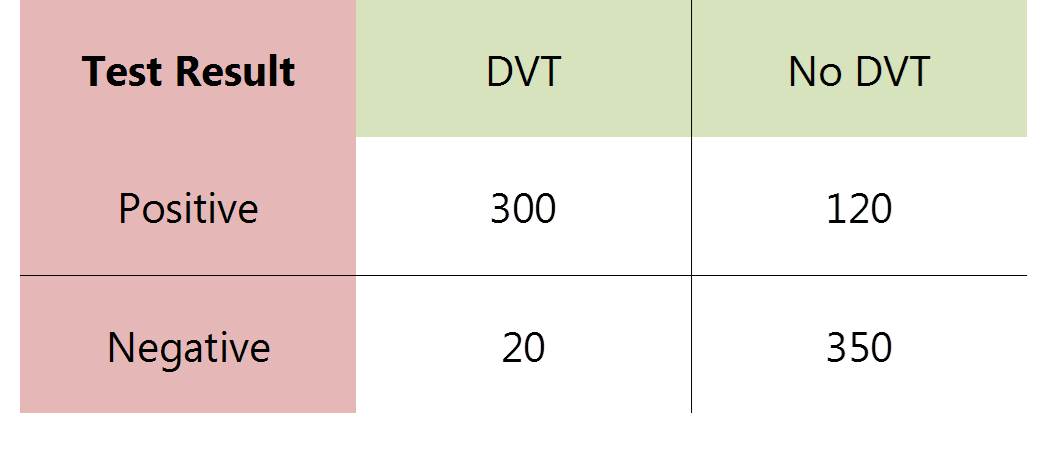WBR0791: Difference between revisions
Sergekorjian (talk | contribs) No edit summary |
Sergekorjian (talk | contribs) No edit summary |
||
| Line 25: | Line 25: | ||
[[Image:WBR0791.jpg|500px]] | [[Image:WBR0791.jpg|500px]] | ||
|Explanation= | |Explanation=[[Image:Biostat.png|600px]] | ||
Sensitivity and specificity are measures of the performance of a classification test (positive or negative). Sensitivity answers the following question: ''if a person has a disease, how often will the test be positive?''. Tests that are highly sensitive help rule out a disease when they are negative. Highly sensitive tests are usually used for screening. On the other hand, specificity answers the following question:''if a person does not have the disease how often will the test be negative?''. Tests that are highly specific help rule in a disease when they are positive. Highly specific tests are usually used to confirm a diagnosis after patients have been screened. Sensitivity and specificity can be calculated using the formulas provided. | |||
|AnswerA=Sensitivity: 93.75 / Specificity: 74.46 | |AnswerA=Sensitivity: 93.75 / Specificity: 74.46 | ||
|AnswerAExp=This is the correct combination. | |AnswerAExp=This is the correct combination. | ||
| Line 43: | Line 43: | ||
|RightAnswer=A | |RightAnswer=A | ||
|WBRKeyword=Specificity, Sensitivity | |WBRKeyword=Specificity, Sensitivity | ||
|Approved= | |Approved=Yes | ||
}} | }} | ||
Revision as of 15:55, 18 September 2014
| Author | [[PageAuthor::Serge Korjian M.D.]] |
|---|---|
| Exam Type | ExamType::USMLE Step 1 |
| Main Category | MainCategory::Biostatistics/Epidemiology |
| Sub Category | SubCategory::Cardiology |
| Prompt | [[Prompt::A new diagnostic test is being evaluated for the diagnosis of DVT. Patients presenting to a large central hospital with symptoms suggestive of DVT are evaluated using this new test in conjunction with the gold standard for diagnosis. Knowing that the gold standard has a sensitivity and specificity approaching 100%, it is used to determine the true incidence of DVT. The table below shows the result of the initial data collection. Which of the following combinations are true regarding this diagnostic test? |
| Answer A | AnswerA::Sensitivity: 93.75 / Specificity: 74.46 |
| Answer A Explanation | AnswerAExp::This is the correct combination. |
| Answer B | AnswerB::Sensitivity: 74.46 / Specificity: 93.75 |
| Answer B Explanation | AnswerBExp::These values are incorrect. |
| Answer C | AnswerC::Sensitivity: 71.42 / Specificity: 94.59 |
| Answer C Explanation | AnswerCExp::This refers to the positive predictive value and the negative predictive value respectively. |
| Answer D | AnswerD::Sensitivity: 94.59 / Specificity: 71.42 |
| Answer D Explanation | AnswerDExp::These values are incorrect. |
| Answer E | AnswerE::Cannot be calculated with the given data |
| Answer E Explanation | AnswerEExp::All the values needed are available to calculate both the sensitivity and specificity. |
| Right Answer | RightAnswer::A |
| Explanation | [[Explanation::
|
| Approved | Approved::Yes |
| Keyword | WBRKeyword::Specificity, WBRKeyword::Sensitivity |
| Linked Question | Linked:: |
| Order in Linked Questions | LinkedOrder:: |
